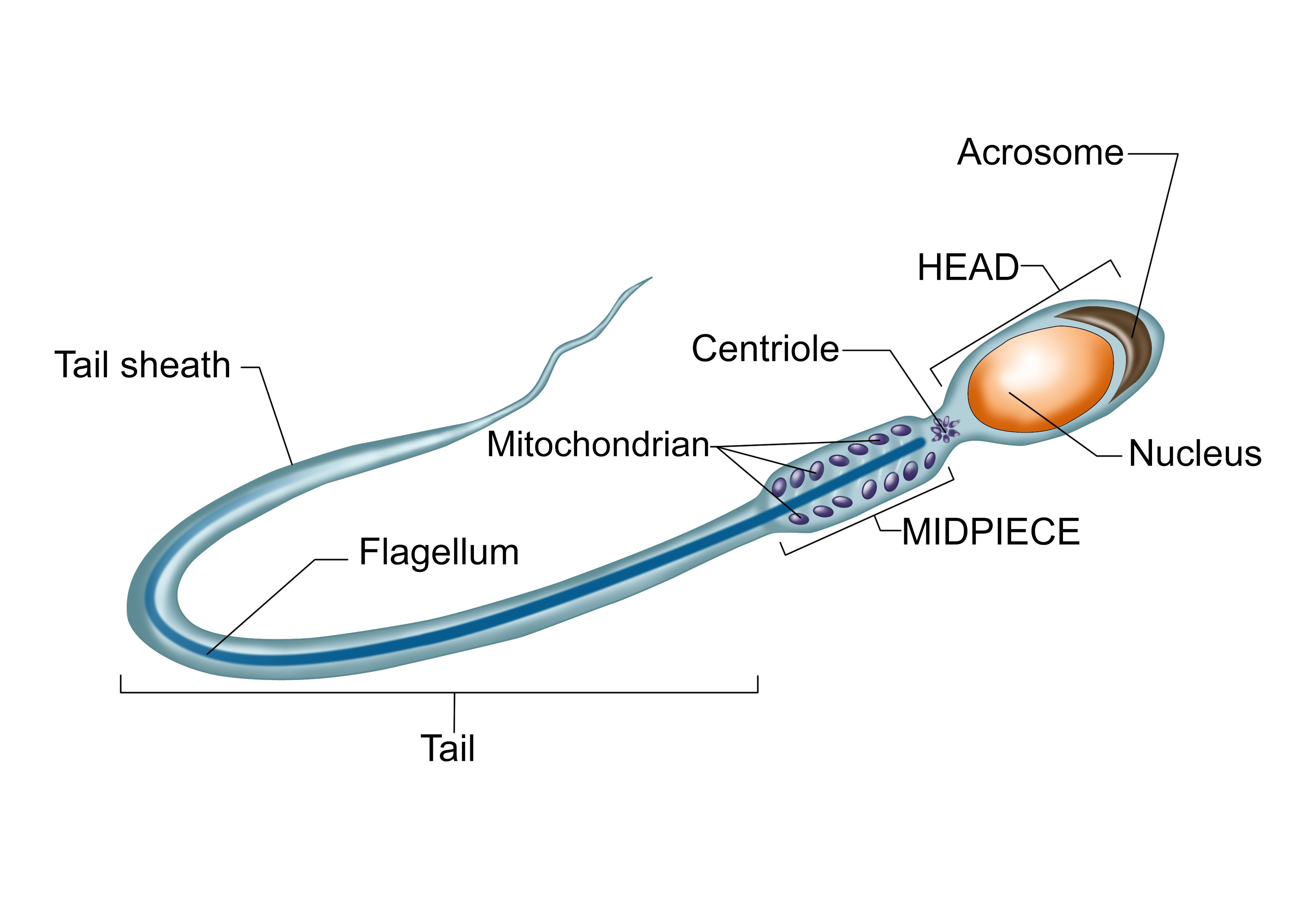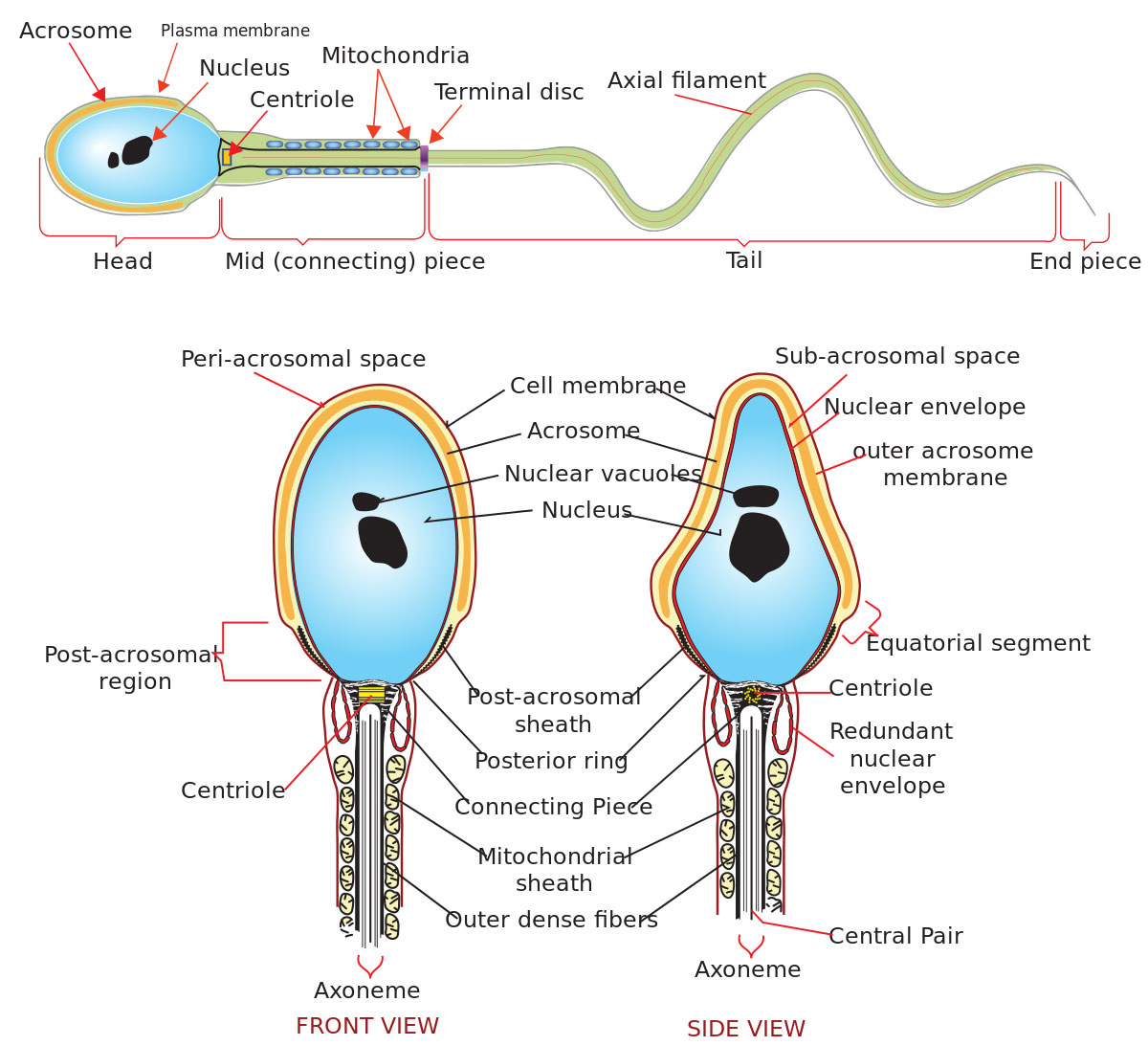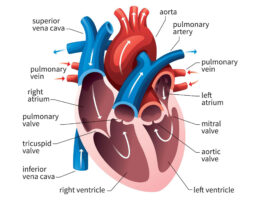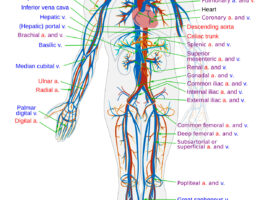A sperm cell is a male reproductive cell or gamete that is produced in the testes. It is designed to fertilize an egg cell and is characterized by a distinctive structure that allows it to swim to the egg. Here is a brief description of the parts of a sperm cell as labeled in a typical diagram:
- Head: The oval-shaped front part of the sperm cell that contains genetic material in the form of 23 chromosomes.
- Acrosome: A cap-like structure located at the tip of the head that contains enzymes used to penetrate the protective layer of the egg.
- Neck: The narrow section between the head and midpiece that contains the centriole, which plays a role in cell division.
- Midpiece: The middle section of the sperm cell that contains mitochondria, which provide the energy needed for movement.
- Tail or Flagellum: The long, whip-like structure that propels the sperm cell through fluid, allowing it to swim toward the egg.
Sperm cells are specialized cells that are adapted to swim and fertilize the egg. Their distinctive shape and structure enable them to move quickly and efficiently toward the egg.




